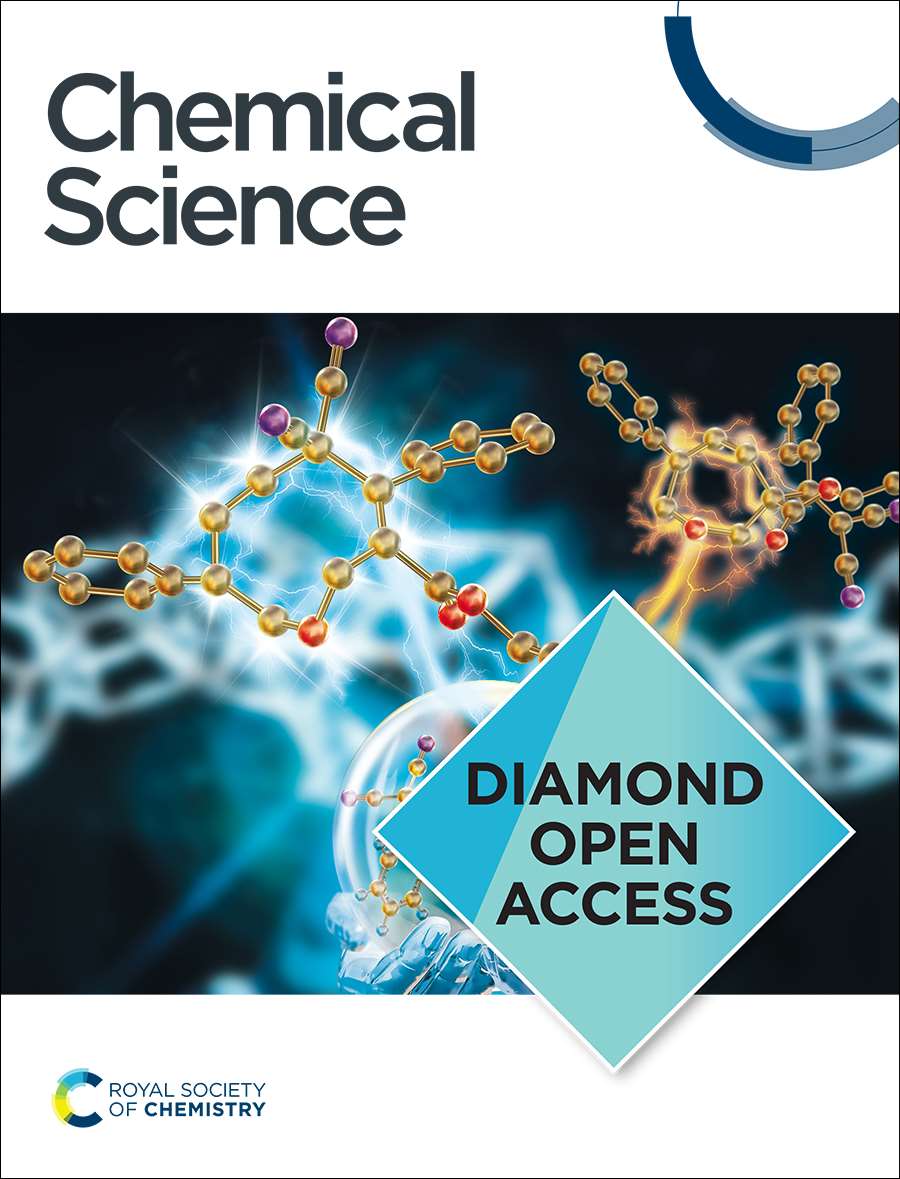Selectivity for TP53 signalling drives the mode of action of a highly potent N,O,O-tridentate naphthoquinone-based organo-ruthenium anticancer drug candidate
IF 7.6
1区 化学
Q1 CHEMISTRY, MULTIDISCIPLINARY
引用次数: 0
Abstract
The metallodrug candidate [(3-ethyl-4-oxo-(pyrazolyl)-dihydronaphthalene)(cymene)ruthenium(II)] (1a) was recently shown to exhibit exceptional antiproliferative activity in the chemo-resistant SW480 cancer cell line with nanomolar potency. This study was conducted to elucidate the determining parameters of the mode of action of this N,O,O-tridentate organoruthenium compound in vitro and in vivo. Four metal(arenes) based on 3-ethyl naphthoquinone (3Et-NQ, a) and 3-morpholine naphthoquinone (3Morph-NQ, b) with ruthenium (1) and osmium (2) were synthesized and characterized. The 3Morph-NQ ligand increased the solubility of the complexes, but showed a 30-fold reduction in antiproliferative activity compared to the 3-Et-NQ ligand and served as biological inactive analogues. The solution reactivity of the four compounds was ligand- and metal-dependent, but they all showed selectivity for amino acids over nucleotides at biologically relevant concentrations. Drug effects were elucidated by proteome profiling at subcellular resolution and showed a pronounced ligand-dependent impact. The 3Et-NQ containing ruthenium- and osmium(arenes) down-regulated TP53 as a central hub in the perturbation network, connected to down-regulated proliferative MAPK3 signalling. Complex 1a strongly down-regulated TP53 and potently inhibited cell cycle progression at the G2/M phase. Furthermore, 1a was found to disrupt the TP53-DDX3-p21 signalling axis by direct interaction with DDX3X and loss of p21 expression. The 3Et-NQ complexes, particularly 1a, showed tumour inhibitory effects in vivo in a CT26 colon carcinoma mouse model, while the 3Morph-NQ complexes were inactive. Tissue proteome analysis of livers of 1a-treated mice displayed similar stress responses as observed in vitro. Finally, tumour tissue of 1a-treated mice revealed down-regulated EGFR, consistent with the impact on the TP53 signalling axis in vitro.TP53信号的选择性驱动了一种高效的N,O,O-三齿萘醌类有机钌抗癌候选药物的作用模式
金属药物候选物[(3-乙基-4-氧-(吡唑基)-二氢萘)(花墨烯)钌(II)] (1a)最近被证明在耐药的SW480癌细胞系中表现出特殊的抗增殖活性,具有纳米摩尔效力。本研究旨在阐明该N,O,O三齿有机钌化合物体外和体内作用方式的决定参数。合成了以3-乙基萘醌(3Et-NQ, a)和3-啉萘醌(3morphi - nq, b)与钌(1)和锇(2)为基料的四种金属(芳烃)。3morpho - nq配体增加了配合物的溶解度,但与3-Et-NQ配体相比,其抗增殖活性降低了30倍,并且是生物无活性的类似物。这四种化合物的溶液反应性依赖于配体和金属,但在生物相关浓度下,它们对氨基酸的选择性都高于核苷酸。通过亚细胞分辨率的蛋白质组分析阐明了药物作用,并显示出明显的配体依赖性影响。含有钌和锇(芳烃)的3Et-NQ作为扰动网络的中心枢纽下调TP53,与下调的增殖性MAPK3信号传导有关。复合物1a强烈下调TP53,并在G2/M期有效抑制细胞周期进程。此外,1a被发现通过与DDX3X的直接相互作用破坏TP53-DDX3-p21信号轴,并导致p21表达缺失。在CT26结肠癌小鼠模型中,3Et-NQ复合物,特别是1a,在体内显示出肿瘤抑制作用,而3morphs - nq复合物则无活性。a处理小鼠肝脏的组织蛋白质组学分析显示出与体外观察到的相似的应激反应。最后,经1a处理的小鼠肿瘤组织显示EGFR下调,这与体外对TP53信号轴的影响一致。
本文章由计算机程序翻译,如有差异,请以英文原文为准。
求助全文
约1分钟内获得全文
求助全文
来源期刊

Chemical Science
CHEMISTRY, MULTIDISCIPLINARY-
CiteScore
14.40
自引率
4.80%
发文量
1352
审稿时长
2.1 months
期刊介绍:
Chemical Science is a journal that encompasses various disciplines within the chemical sciences. Its scope includes publishing ground-breaking research with significant implications for its respective field, as well as appealing to a wider audience in related areas. To be considered for publication, articles must showcase innovative and original advances in their field of study and be presented in a manner that is understandable to scientists from diverse backgrounds. However, the journal generally does not publish highly specialized research.
 求助内容:
求助内容: 应助结果提醒方式:
应助结果提醒方式:


